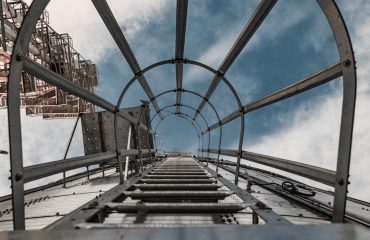body {
font-family: sans-serif;
line-height: 1.6;
}
h1, h2, h3 {
color: #333;
}
h1 {
font-size: 2.5em;
}
h2 {
font-size: 2em;
}
h3 {
font-size: 1.5em;
}
Steel. A name synonymous with strength, durability, and reliability. But beyond its inherent properties lies a world of innovative applications, pushing the boundaries of engineering and design. This blog post delves into five compelling case studies, showcasing the versatility and problem-solving capabilities of steel solutions across diverse industries.
1. Skyscraper Construction: Reaching New Heights with High-Strength Steel
The construction of skyscrapers demands materials capable of withstanding immense pressure and stress. High-strength steel alloys, like those incorporating advanced micro-alloying techniques, have revolutionized skyscraper construction. Consider the Burj Khalifa, the world’s tallest building. Its structural frame relies heavily on high-strength steel, allowing for a slender profile and unprecedented height while maintaining structural integrity. The use of these advanced steels reduces the overall weight of the structure, leading to cost savings in foundation design and construction. Furthermore, the high yield strength allows for thinner sections of steel, maximizing usable space within the building. This case study highlights the crucial role of steel in enabling architectural marvels and pushing the limits of human engineering.
2. Bridge Engineering: Spanning Gaps with Steel’s Tensile Strength
Bridges are testaments to engineering prowess, requiring materials capable of withstanding dynamic loads and environmental factors. Steel’s exceptional tensile strength makes it an ideal material for bridge construction, enabling the creation of long spans and complex designs. The Akashi Kaikyō Bridge in Japan, one of the world’s longest suspension bridges, exemplifies this. Its massive steel cables and supporting structures demonstrate steel’s ability to handle immense forces, providing a safe and reliable passage across a significant water body. The use of high-tensile steel also contributes to the bridge’s aerodynamic stability, reducing susceptibility to wind-induced vibrations. This case study underlines steel’s contribution to efficient and robust infrastructure development.
3. Automotive Manufacturing: Lightweighting and Enhanced Safety with Advanced High-Strength Steels
The automotive industry constantly seeks lighter, safer, and more fuel-efficient vehicles. Advanced high-strength steels (AHSS) play a pivotal role in achieving these goals. AHSS offers a unique combination of high strength and formability, allowing manufacturers to create lighter car bodies without sacrificing safety. The use of AHSS in crumple zones enhances crashworthiness, absorbing impact energy more effectively and protecting occupants. Moreover, reduced vehicle weight translates to improved fuel economy and reduced emissions, aligning with global sustainability efforts. This case study showcases steel’s adaptability to meet evolving industry demands and contribute to a greener future.
4. Offshore Wind Turbine Construction: Steel’s Role in Renewable Energy
The global shift towards renewable energy sources has significantly increased the demand for robust and reliable offshore wind turbines. Steel plays a critical role in the construction of these massive structures. The towers, foundations, and support structures of offshore wind turbines are primarily constructed from high-strength, corrosion-resistant steel. These steels must withstand extreme environmental conditions, including strong winds, salt spray, and wave action. The use of specialized coatings and surface treatments further enhances the longevity and durability of the steel components. This case study demonstrates steel’s contribution to sustainable energy production and its role in combating climate change.
5. Pipeline Construction: Ensuring Safe and Efficient Transportation of Resources
The transportation of oil, gas, and other vital resources relies heavily on extensive pipeline networks. Steel pipes, often coated with protective materials to prevent corrosion, are the backbone of these networks. The selection of steel grade depends on factors such as pressure, temperature, and the nature of the transported substance. High-strength, low-alloy steels are commonly used for pipelines operating under high pressure, ensuring the safe and efficient transportation of resources over long distances. Regular inspections and maintenance are crucial to ensure the integrity of the pipelines and prevent environmental disasters. This case study emphasizes steel’s role in maintaining essential infrastructure and supporting global energy security.
These five case studies represent only a fraction of the diverse applications of steel solutions. From towering skyscrapers to intricate automotive components, steel’s enduring strength and versatility continue to shape our world. Its ability to adapt to evolving technological advancements and sustainability goals ensures its continued prominence in various industries for years to come.
SEO-Friendly Tags:
- Steel Applications
- Steel Case Studies
- High-Strength Steel
- Steel Construction
- Advanced High-Strength Steels (AHSS)




